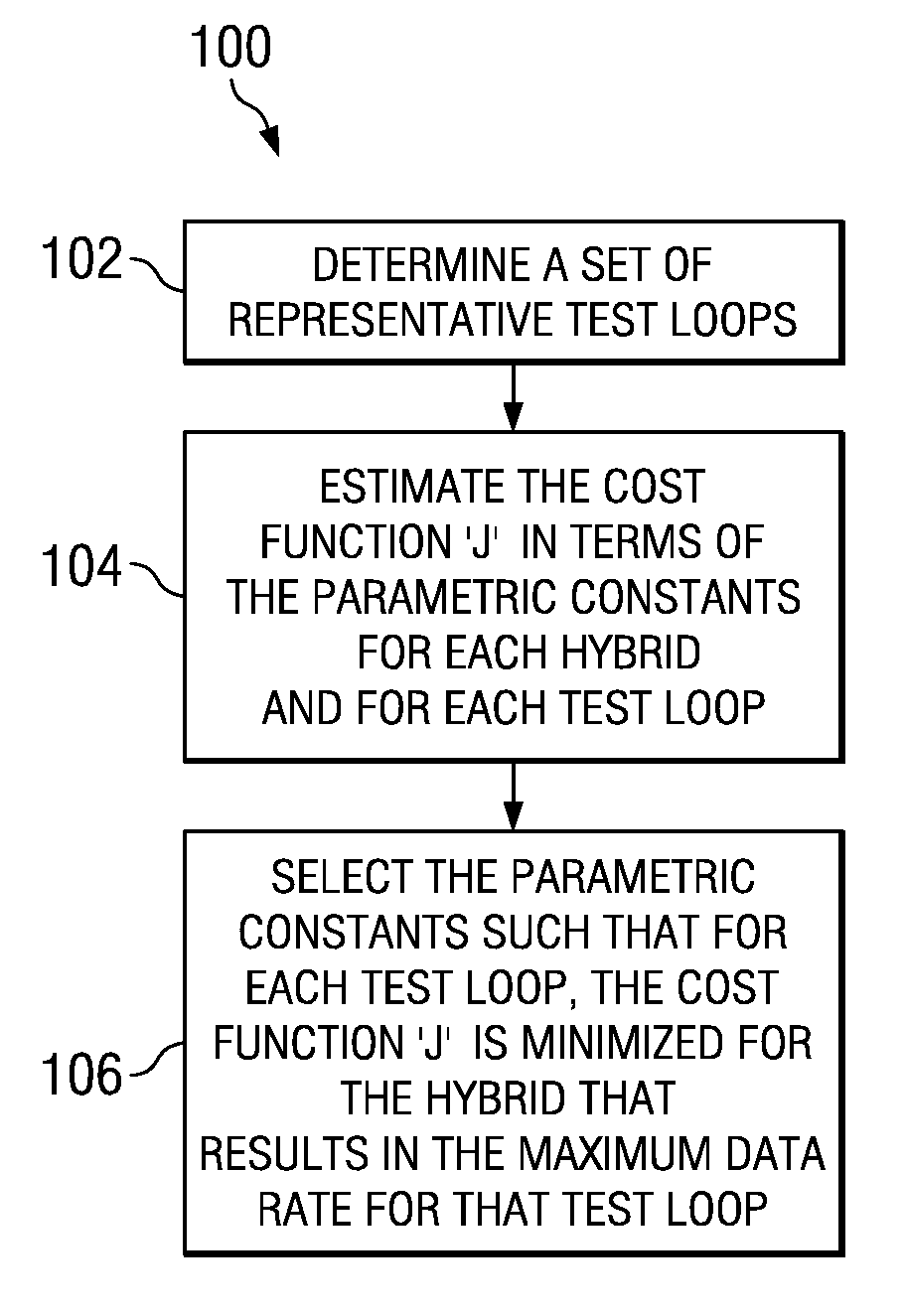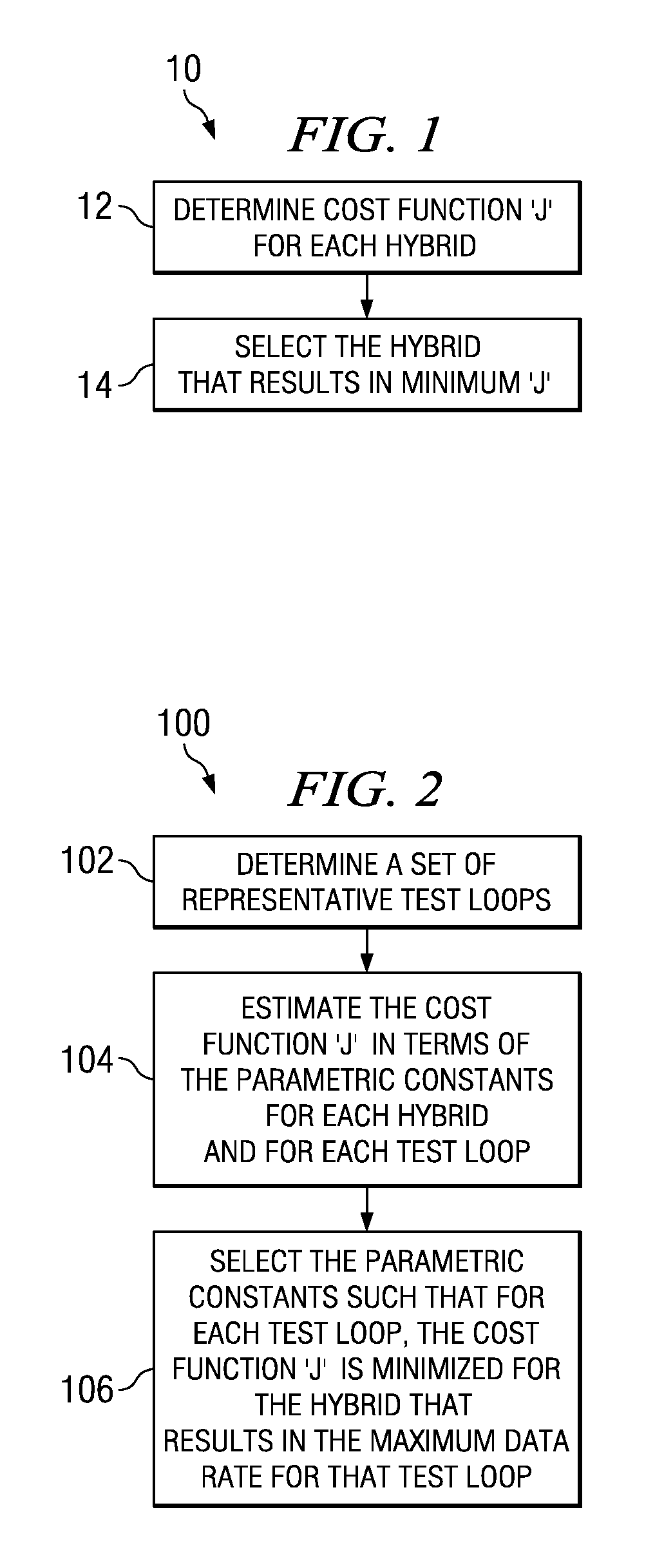Method for adaptive hybrid selection during ADSL modem training
- Summary
- Abstract
- Description
- Claims
- Application Information
AI Technical Summary
Benefits of technology
Problems solved by technology
Method used
Image
Examples
Embodiment Construction
[0012]A method 10 is shown in the FIG. 1 for adaptively selecting the hybrid based on a measure ‘J’ during ADSL modem training and that is directly coupled to the channel capacity. During ADSL modem training the cost function J is evaluated for each hybrid position as seen in block 12, and the hybrid corresponding to the minimum value of J is selected as seen in block 14. According to the most preferred embodiment that is discussed herein, the cost function ‘J’ is given by,
[0013]J=A*∑iɛSlog2(nf_quiet(i))+B*f(nf_echo),
where
[0014]A and B are empirical constants estimated based on the performance of the different hybrids over a set of representative test loops. An exact procedure for determining these constants is described later with reference to FIG. 2.
[0015]“nf_quiet(i)” is the estimated quiet noise floor for tone index-i with no transmit signal. It is estimated as
[0016]nf_quiet(i)=1N∑f=1NYf(i)2,
where Yf is the Fast Fourier Transform (FFT) of the fth received Discrete Mu...
PUM
 Login to view more
Login to view more Abstract
Description
Claims
Application Information
 Login to view more
Login to view more - R&D Engineer
- R&D Manager
- IP Professional
- Industry Leading Data Capabilities
- Powerful AI technology
- Patent DNA Extraction
Browse by: Latest US Patents, China's latest patents, Technical Efficacy Thesaurus, Application Domain, Technology Topic.
© 2024 PatSnap. All rights reserved.Legal|Privacy policy|Modern Slavery Act Transparency Statement|Sitemap



